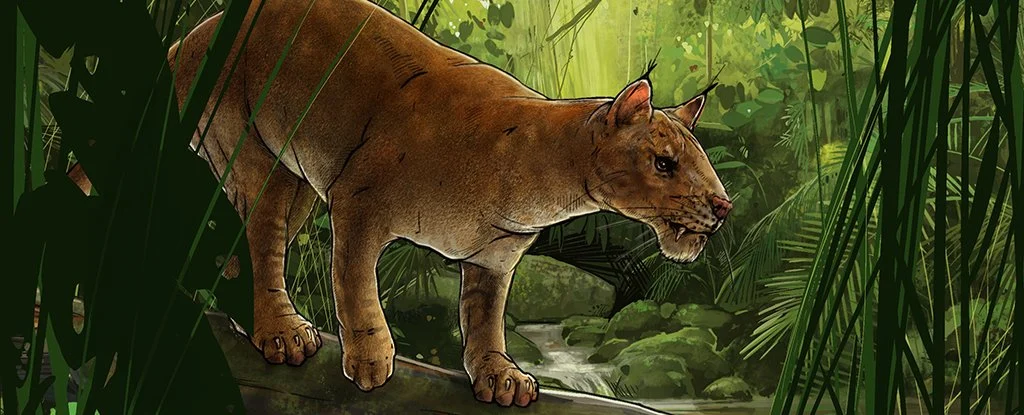By: Kerry Ding
Around thirty epochs (30 million years) ago, an ancient bear wandered around a river in North Dakota. Soon later, it died and after it sank into the ground, it was preserved in the sediments of the river. Millions of years later, Paleontologists dug up the fossil of the animal. They discovered that this animal, called the ‘Dawn Bear’, may have broken its teeth just to eat. This is important because it shows us that the food it ate was very hard. This bear looks like a raccoon and eats like an otter. After examining the young male Eoarctos Vorax (Scientific name for the ‘Dawn Bear’), scientists determined that it broke one of its back teeth because it most likely ate something too hard, and when the teeth broke it got an infection in its teeth. This most likely meant a painful premature death for this bear.
However, this painful life has helped us advance in science and learn more about our carnivorous ancestors. According to Dr. Xiaoming Wang, a paleontologist at the Natural History Museum in Los Angeles County, the fossil was extremely well preserved. “This animal is telling us a lot of stories” Dr. Wang noted after his team found 5 other similarly preserved fossils of Eoartctos Vorax.
After comparing the skeletons of modern animals and this Eoarctos Vorax, the paleontologist figured out that the Dawn Bear was part of the Carnivora Order, a group of animals that include dogs, cats, wolves, and bears. Because of the animal’s large molar teeth, the scientists easily knew that it was an Arctoid, a group that includes the brown bear. Despite this, the brown bear split with the Dawn Bear thousands of years ago.
Dr. Wang and his team named the animal. It was officially called the Eoarctos Vorax, which means it is a voracious eater. The dawn bears most likely ate extremely hard food for them to break their teeth on it. The scientists thought that since the development of powerful teeth is very specific, it means the bear would be eating a specific food. Now they believe that the dawn bear ate shellfish like mollusks. The mollusks could have broken the young bear’s teeth.
Sources:
https://www.tandfonline.com/doi/full/10.1080/02724634.2022.2145900
https://www.nytimes.com/2023/06/18/science/bear-raccoon-otter-fossil.htmlc











